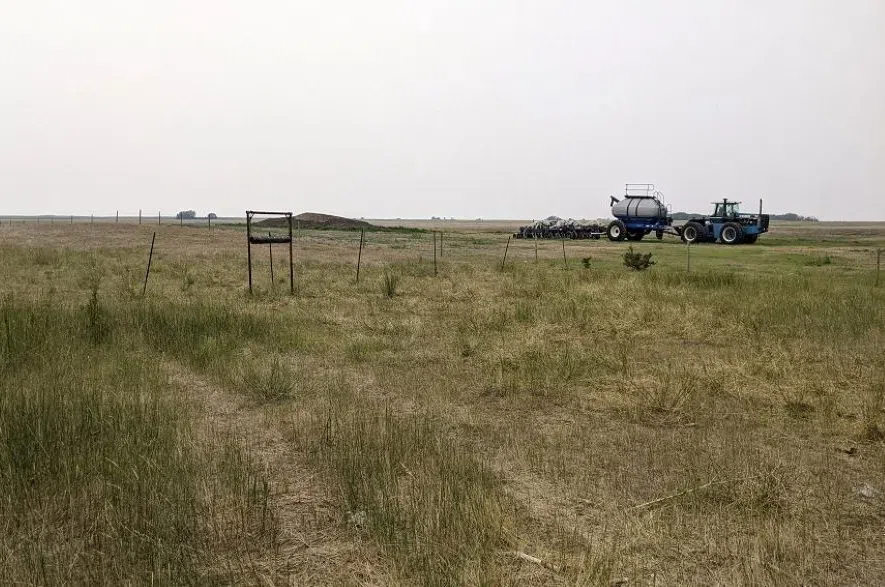While many in Saskatchewan are pleased about the lack of snow on the ground and mild temperatures, farmers who were already hit with a difficult season because of drought are concerned those conditions could impact their crops in 2024.
Jeremy Welter, a farmer from Kerrobert, said snowfall during the winter has a major impact on soil moisture levels in the spring.
“The lack of snow is incredibly concerning. It’s less of an issue of moisture; what the snow really provides is moisture conservation,” Welter said.
“While you’ve got that snow on the fields, it’s kind of like a blanket, so it stops that moisture in the dirt from just evaporating through the soil and disappearing, and that’s what we don’t currently have.”
Saskatchewan’s Water Security Agency on Wednesday said many parts of the province are heading into the winter with below-normal moisture levels. According to the agency, the southwest is particularly dry, and could see water supply issues next year if the weather doesn’t co-operate.
“In some cases, an above-normal snowpack would be required to stave off extremely dry conditions,” the agency said in a statement.
Don Connick, a farmer in Gull Lake, suggested the only good thing about the warm weather right now is that it’s easier and cheaper to feed his cattle.
“We’ve had a little bit of snow and rain this fall, but we’re going to need a very large amount of moisture in the spring or this winter to (create) optimism for the springtime,” Connick explained.
“We’ve had a fairly warm winter so far, and that’s been good for people feeding cattle. Buying feed is very expensive. (I’m) certainly hoping and needing a lot of moisture before spring or in the spring.”
Connick added his farm has seen dry conditions throughout the last few years. He said this past summer was the driest and warmest he’s experienced in quite some time.
“As far as crop yields, they were very low. The pasture conditions are really serious. Most guys went into the fall with pastures in very poor condition and pastures and hayland needs early moisture to recover for next year,” Connick explained.
“For both crops – pasture and hayland – we’re going to need a real big infusion of moisture.”
Welter said the current lack of snow combined with this year’s dry season has added fuel to the fire.
“What’s going to happen next year, with the dry fall that we’ve had, is a lot of concern over a number of things for next year,” Welter explained.
“The reality is, it’s much more than just (crops). What is this going to mean for ongoing crop insurance premiums?”
Welter also expressed concern about the bigger picture and what another poor crop year in Saskatchewan could mean for people across Canada and around the world.
“Most of what we produce in Saskatchewan and Western Canada doesn’t stay in Canada. A vast majority of our production goes to other parts of the world, and that’s something that weighs on all of us,” he explained.
“We produce food for a very hungry world, and when we’re unable to do that, that means somebody, somewhere is potentially going hungry. There’s a lot that weighs on the minds of farmers in years and weather cycles like this.”
Welter said this past year felt like 2002, when Saskatchewan saw major drought. Connick agreed, saying this past year reminded him of 1980, 1988, 2001 and 2002.
“We’ve gone through this before, but I think this is kind of the longest and most sustained drought period we’ve had,” Connick said.
“We’ve got four or five years of drought under our belt now where we’ve had below normal rainfall and higher temperatures. We certainly have to be looking at programs in the future if we’re going to have more sustained and serious droughts.”











